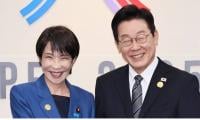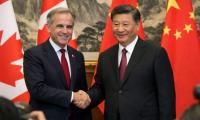More devaluation
Another fall in the value of the rupee against the dollar has raised questions over how vulnerable Pakistan’s economy is. The days of keeping the exchange rate stable for the first four years of a government’s tenure are firmly over. One may argue that this has confirmed that former finance minister Ishaq Dar’s attempts to solve the economic crisis in Pakistan through cosmetic surgery have pretty much failed. The Pakistani rupee is now trading at close to Rs120 per US dollar. Most speculation points to the fall being a result of intervention by the State Bank of Pakistan (SBP); the SBP stepped in again on Tuesday to arrest the continuing slide. With the current devaluation being the third major fall in six months, a sense of uncertainty has entered into the economy. Coming amidst a renewed conversation about a return to the IMF for another bailout, we are seeing the failure of the current batch of economic policies. The trouble, of course, is that the currency crisis is very much a part of IMF directives.
It is worth remembering that just about a year back the IMF and World Bank were both praising Pakistan’s economic recovery. For all of Dar’s faults, he was able to negotiate a limited amount of economic sovereignty from Pakistan’s international creditors. However, the failure to come up with sound economic and fiscal policies on our own is what has added to the instability in the economy. The fiscal and current account deficits have been ballooning for years. We cannot tell how the currency devaluation will help address Pakistan’s low foreign exchange reserves, which now only stand at two months of imports. No economic expert advising the federal government has a plan worth discussing seriously. Much of the economic policy agenda is slight modifications of external directives – which are rarely designed in Pakistan’s own interest. One must wonder why the government did not favour a higher one-time devaluation, rather than the staggered approach it has taken. This has created uncertainty around Pakistan’s currency, which is bad news for businesses. Moreover, this has created speculation around currency and is likely to end up increasing demand for foreign currency as short-term investments or saving the value of people’s wealth. What is even more surprising is that the SBP has felt no need to explain why it is devaluing the currency – and why the last devaluation was not the final one in the short term. The central bank has insisted that market mechanisms are at play which, if true, paints an even more worrying picture of people not trusting the Pakistani rupee. This is a situation that will need to be addressed through coherent policymaking.
-
 Jennifer Lawrence Shares Rare Insight Into Relationship With Hubby Cooke Maroney
Jennifer Lawrence Shares Rare Insight Into Relationship With Hubby Cooke Maroney -
 Philippines: Rubbish Landfill Collapse Death Toll Rises To 13
Philippines: Rubbish Landfill Collapse Death Toll Rises To 13 -
 Kate Middleton Fears For Family After Shocking Palace Break-in
Kate Middleton Fears For Family After Shocking Palace Break-in -
 Sanae Takaichi, Lee Jae Myung Meet To Push For Closer Security And Economic Ties At High-stakes Summit
Sanae Takaichi, Lee Jae Myung Meet To Push For Closer Security And Economic Ties At High-stakes Summit -
 Canadian PM Visits China After A Decade Of Diplomatic Strain: What Deals Are In Focus?
Canadian PM Visits China After A Decade Of Diplomatic Strain: What Deals Are In Focus? -
 New York Plans Limited Rollout Of Self-driving Taxis
New York Plans Limited Rollout Of Self-driving Taxis -
 Nvidia Clarifies ‘no Upfront Payment Needed For H200 Chips Production’
Nvidia Clarifies ‘no Upfront Payment Needed For H200 Chips Production’ -
 Sarah Ferguson Faces Painful Choice Between Peace, Family Bond
Sarah Ferguson Faces Painful Choice Between Peace, Family Bond -
 Africa First: Nigeria Set To Approve Landmark AI Rules For Digital Economy
Africa First: Nigeria Set To Approve Landmark AI Rules For Digital Economy -
 WhatsApp Tests Built-in Supervision Feature Long Missing From The App
WhatsApp Tests Built-in Supervision Feature Long Missing From The App -
 Iceberg A-23A Turns Blue As Scientists Warn Collapse Is Imminent
Iceberg A-23A Turns Blue As Scientists Warn Collapse Is Imminent -
 FIFA Selects Stats Perform For Betting Data And Live Streaming
FIFA Selects Stats Perform For Betting Data And Live Streaming -
 Is Jessica Simpson Really Joining 'The Bachelorette'?
Is Jessica Simpson Really Joining 'The Bachelorette'? -
 Brayden Point Injury Raises Concern After Early Exit For Tampa Bay Lightning
Brayden Point Injury Raises Concern After Early Exit For Tampa Bay Lightning -
 Meghan Trainor Addresses 'toxic Mom Group' Rumours Again
Meghan Trainor Addresses 'toxic Mom Group' Rumours Again -
 Mattel Autistic Barbie Doll Aims To Boost Representation And Inclusion
Mattel Autistic Barbie Doll Aims To Boost Representation And Inclusion



